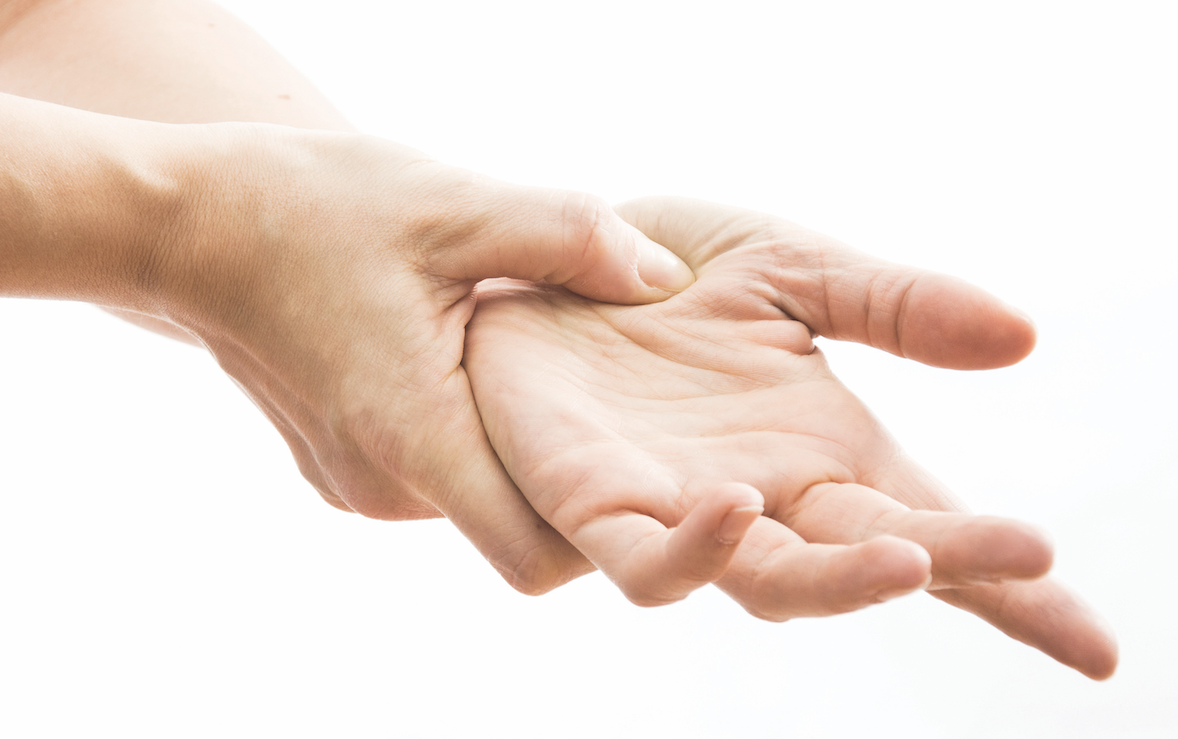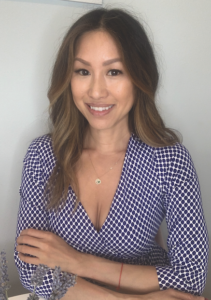Acupressure: Press Here to Feel Better

Acupressure, a more subtle form of acupuncture, is based on the idea of Qi (energy life force) circulating the body. When your Qi circulates and flows smoothly, you are healthy and well-balanced. However, when the Qi flow becomes “stuck” or “weak,” resulting in uneven Qi flow, that’s when ailments begin to occur. Because Chinese Medicine is a holistic medicine — meaning the practice is focused on the idea that the mind, body and spirit are connected — acupressure can positively ease peaky ailments, anywhere from migraines to infertility to some chronic diseases.
Acupressure takes away the same idea of acupuncture: there are specific points on your body that (when combined with others) help to relieve pain, lower inflammation, boost Qi circulation and help you feel better. In fact, acupressure points are acupuncture points — the only difference is that you’re not using a needle but, instead, massaging that specific point for treatment.
By massaging or pressing down on these points for several minutes regularly throughout the day, acupressure can improve your overall, general health as well as target ailments you might be suffering from.
Benefits of Acupressure
- Boosts circulation (no more cold hands and feet!)
- Improves digestion
- Leads to more energy
- Enhances sleep quality
- Improves mental clarity
- Regulates menstruation and its symptoms
- Lowers blood pressure
- Relaxes tight muscles and fascia
- Assists in reducing pain during labor
- Expedites the healing of injured joints
- Reduces overall body pain and inflammation.
- And the best part — it boosts the overall feeling of calmness and centeredness.
What different things can we target with acupressure?
I love using acupressure for those who are needle-sensitive or afraid of needles or for small children. It’s safe to use on almost everyone.
In my practice, I also use it often for issues such as anxiety/stress, poor sleep and poor digestion.
You can even use it on the face when wanting to improve facial toning and blood circulation. Facial acupressure is like natural botox; it relaxes the facial muscles so they appear plumper and more lifted. Plus, it’s free — and you can do it anytime you want.
5 Acupressure Points To Practice on Yourself for Better Health
For stress, my go-to is a point located near the third eye, between the eyebrows. It’s a point called yintang. By pressing it, it can activate your prefrontal cortex of the brain which dictates cognitive behavior, decision-making, emotions and attention span. It will naturally calm you down. This works especially well on children and pets.
For better digestion, I use a point called Stomach 36. It’s located a few inches below the kneecap anterior to the fibula bone. Massaging this point will improve and regulate digestion and even help boost your immune system as well. (Gut health = immune health)
For energy, Ren 6 is the best point to use. The Daoist monks recognized this point to not only stimulate more energy for the body, but also to boost libido. It’s located right underneath the belly button, about two fingers breadth below.
For better complexion of the face, my go-to is Large Intestine 4. Located between the thumb and index finger at the highest bulge of the muscle and approximately level with the end of the crease. This multifunctional point helps boost blood flow to the face (which carries nutrients) creating an improved, nourished face and skin. This point is also used for any head or neck issues such as headaches, TMJ and neck pain.
For better sleep, there’s a point located halfway behind the ear lobe and the base of your occiput called Anmian. Massaging this area prior to bedtime can induce a more peaceful sleep.
How many times a week can one benefit from acupressure?
Like many other healing practices, acupressure is most successful when performed several times a week. While it depends on the severity of the ailment, I normally would recommend 4-6 times a week, twice a day. It seems like a lot, but you have to remember the human body doesn’t heal overnight. Acupressure works with your body’s natural healing process. That’s why you want to do it often — and regularly — until you feel and see relief.

Debbie Kung, DAOM, LAc., is a Board-certified NCCAOM-licensed Doctor of Traditional Chinese Medicine. Kung practices TCM modalities such as acupuncture, herbal remedies, Gua Sha, cupping, auricular acupuncture, specializing in stress management, cosmetic facial rejuvenation, pain management, Lyme disease, fertility treatments/IVF support, Bell’s palsy, esoteric acupuncture, sports medicine acupuncture and the battlefield/NADA protocol. Kung is currently practicing in both Austin, Texas, and New York City. IG: @kung_acu






